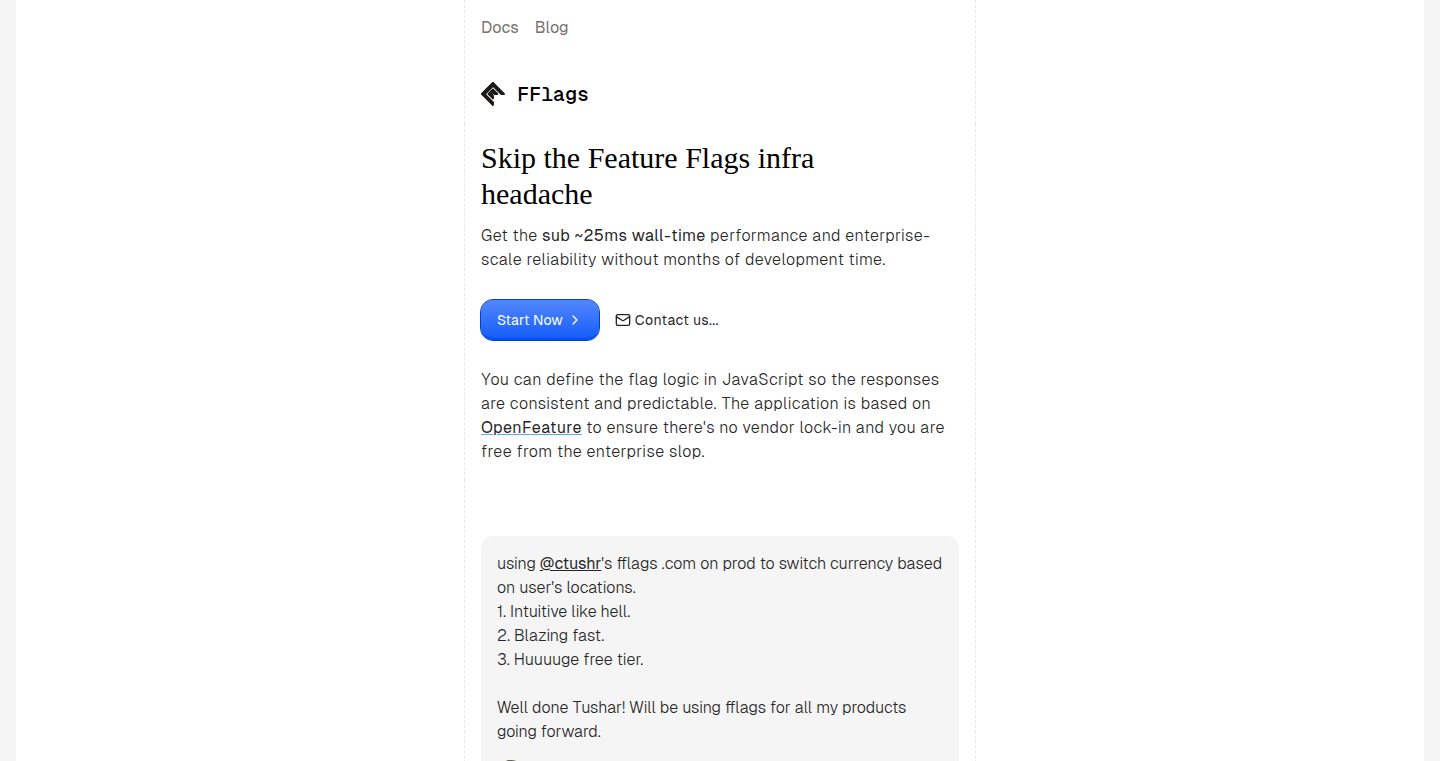

Highlight 1
The use of TypeScript for defining flags allows developers to create complex logic in a familiar coding environment, making it intuitive and powerful.
Highlight 2
The platform's use of the OpenFeature standard ensures future-proofing and avoids vendor lock-in, allowing flexibility for the user.
Highlight 3
The performance is outstanding, with low latency (sub-25ms) for globally distributed applications, ensuring seamless feature flag evaluations.

Improvement 1
The user interface (UI) could be more streamlined and intuitive for non-developers or those less familiar with TypeScript, to make it more accessible to a wider audience.
Improvement 2
Although the free tier is generous, the pricing structure beyond that could be made more transparent, with clearer explanations of scaling costs.
Improvement 3
Documentation and onboarding resources could be enhanced, especially for new users unfamiliar with feature flagging and the OpenFeature standard.
Product Functionality
Consider adding an easy-to-use UI for managing flags, especially for teams without deep technical expertise. This could attract non-developers who need basic flag management capabilities.
UI & UX
The UI could be more user-friendly with intuitive workflows and better visualization of flag states. A more modern and clean design would improve overall user experience.
SEO or Marketing
Improving SEO with more targeted keywords related to feature flagging, software development, and DevOps tools would help attract organic traffic. Case studies or testimonials could further boost credibility.
MultiLanguage Support
Adding multi-language support would be valuable, especially for global teams. This would ensure that users from different regions can fully leverage the platform.
- 1
What is feature flagging, and why should I use it?
Feature flagging allows you to enable or disable features in your application without deploying new code. It's useful for testing new features, controlling rollouts, and managing risk in production environments.
- 2
How do I define feature flags in FFlags?
In FFlags, feature flags are defined using TypeScript, giving you full control over the logic behind your flags. You can write complex conditions to toggle features based on user data, location, or other factors.
- 3
Is FFlags suitable for small projects or startups?
Yes, FFlags offers a generous free tier, making it suitable for small projects, startups, or developers looking for a scalable feature flagging solution without upfront costs.
